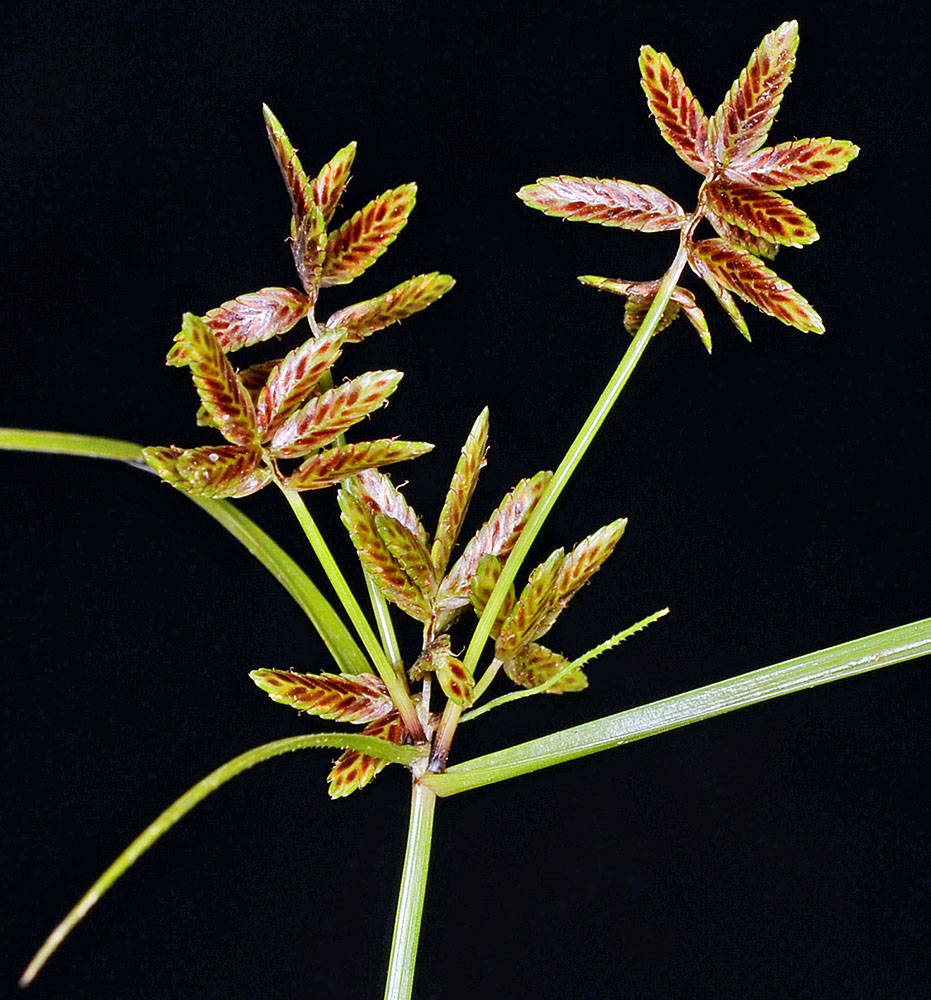Cyperus lanceolatus
Cyperus bipartitus
shining flatsedge
roundly trigonous, 3–25(30) cm × 0.3–1.4 mm.
1–8 cm × 1–2 mm.
cluster head-like, 1, loosely ovoid, compressed, 7–14 × 9–14 mm;
rays 1–4; to 2(3) cm;
inflorescence bracts 2–3; horizontal to ascending at 45(75)°.
3–5(8), flattened, oblong to oblong-lanceoloid, 8–18 × 2–2.6(3) mm; floral scales (6)10–26(32), closely overlapping, 1.9–2.7 × 1.8–2.3 mm, oblong to ovate; light to dark brown, with light brown mid-stripe;
lateral ribs 0; medial ribs 2–3, 2-keeled;
apex obtuse.
anthers 0.4–0.5 mm;
styles 0.6–1 mm;
stigmas 1–1.5 mm.
with network of ridges forming isodiametric or square cells, obovoid to ovoid, 1–1.3(1.5) × (0.6)0.8 mm.
Cyperus lanceolatus
Cyperus bipartitus
Shorelines exposed by seasonal low water levels, ditches, disturbed wetlands. 0–800 m. Col, CR, Sisk, WV. CA, ID, NV, WA; northeastern Canada, most of US, south to South America. Native.
Cyperus bipartitus closely resembles C. niger, a taller rhizomatous perennial with clustered shoots that are often collected without the rhizomes.
Barbara Wilson, Richard Brainerd, Nick Otting
- Local floras:
CA,
OR,
WA
- Local Web sites:
CalFlora,
CalPhotos,
Flora NW,
PNW Herbaria
WildflowerSearch
iNaturalist (observations)
USDA Plants Database
- LBJ Wildflower Center
- SEINet
- Plants of the World Online
- Encyclopedia of Life
- Wikipedia
- Google Image Search



